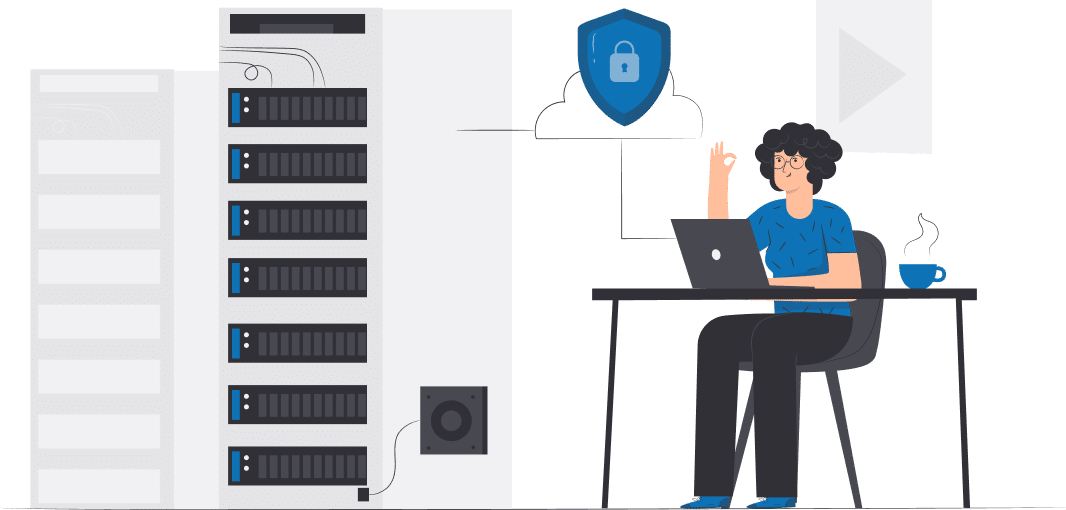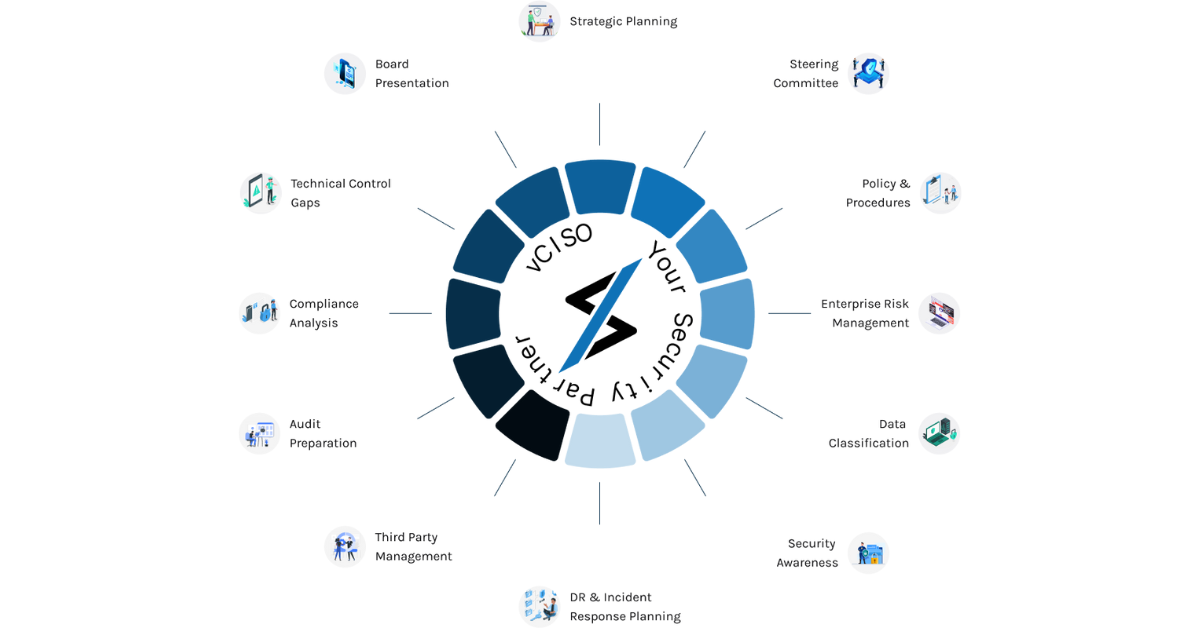
FedRAMP Compliance Made Easy: A Step-by-Step Guide for Cloud Service Providers
Achieving FedRAMP certification is essential for cloud service providers to build confidence and trust with federal agencies. However, what is
The Zero Trust Maturity Model developed by the Cybersecurity and Infrastructure Security Agency (CISA) is one of many roadmaps agencies can reference as they transition towards a Zero Trust Architecture.
This model was created to assist agencies in developing Zero Trust strategies and implementation plans. Learn more about Zero Trust architecture and the Zero Trust Maturity Model below.

Zero Trust Architecture, also known as the Zero Trust Security Model or Perimeterless Security, is an approach to IT system strategy, design, and implementation based on the idea that users and devices should be trusted implicitly — even if they were previously verified or connected to a permissioned network.
Some experts say that Zero Trust Architecture operates under the motto, “Never trust, always verify.”
The Zero Trust Maturity Model was developed by the Cybersecurity and Infrastructure Security Agency (CISA).
This model helps organizations transition to a Zero Trust security model. It delivers a framework that businesses in the public and private sectors can use to streamline and strengthen their efforts to protect their technology infrastructure and resources.
CISA released the first version of the Zero Trust Maturity Model in September 2021 in response to President Biden’s cybersecurity executive order. An updated version was released in April 2023.
The Zero Trust approach to security assumes that your organization’s network has already been compromised and that you cannot fully trust any user or device. This approach protects data in the following ways:
This model provides an extra layer of defense and ensures that untrustworthy individuals who make it past the first line of protection do not have free reign to access, steal, or destroy sensitive data.
Following the Zero Trust Maturity Model and adopting Zero Trust Architecture offers numerous advantages to all members of your organization, including the following:
One of the most significant benefits of this model is that it establishes multiple barriers around every vulnerability within the network. By creating multiple layers of defense, your organization becomes less vulnerable to cyberattacks, data breaches, and other cybersecurity threats.
The Zero Trust Maturity Model also provides better visibility into your network. This increased visibility allows you to isolate vulnerabilities and respond sooner.
Zero Trust architecture (which can be achieved by following the Zero Trust Maturity Model) breaks down silos and facilitates information-sharing and collaboration across all levels of your organization.
The Zero Trust Maturity Model isn’t just good for your organization. It also benefits your customers and suppliers and gives them the peace of mind they need to know that their data is safe with you.
Increased satisfaction on these fronts can also help your organization gain more referrals and experience more growth.
The latest version of the Zero Trust Maturity Model is based on the seven tenets of the Zero Trust framework (these tenets were established by the National Institute of Standards and Technology (NIST):
This tenet is based on the idea that networks consist of numerous devices, applications, and resources that can have access to enterprise-owned assets. Because of this, they must be treated as potential risks.
This tenet is based on the idea that location alone does not imply trust. Because of this, access shouldn’t be automatically granted just because a device is on an enterprise’s network infrastructure. It must meet the same security requirements regardless of location.
This tenet is based on the idea that a device might be trusted in a previous session, but that doesn’t mean it should be inherently trusted for the next session. Every session must be authenticated to validate the user’s identity continuously.
This tenet is based on the idea that authorization decisions should consider external sensors, such as a user’s location and device, as well as real-time application context.
This tenet builds off the previous ones and states that no device or asset should receive implicit trust. Every request should trigger a security posture assessment, and all assets should be monitored continuously to ensure they’re updated and uncompromised.
Based on this tenet, trust is granted on an ongoing basis. Numerous elements are factored in before an enforcement decision is made, too.
This tenet is based on the importance of collecting analytics and insights on assets. Doing so can enhance decision-making and help organizations to avoid risky approvals.
As an organization works on adopting the Zero Trust Maturity Model, it will go through the following four levels of Zero Trust Maturity:
At this level, an organization has manually configured lifecycles, siloed policy enforcement capabilities, and attribute assignments, static security policies, and solutions that only address one pillar at a time.
At this stage, organizations start automating configurations, attribute assignments, and enforcement decisions. They also start implementing responsive changes to least privilege after provisioning and aggregating more visibility into internal systems.
At this stage, enterprises are using automated controls for lifecycle configurations, attribute assignments, and cross-pillar coordination. They also have centralized visibility and identity control.
Businesses at this stage can implement integrated policies across pillars and make changes dynamically to least privilege based on risk and posture assessments. They are also actively building toward enterprise-level awareness.
At this stage, organizations have fully automated the lifecycles and assignment of attributes to assets, as well as resources that self-report with dynamic policies based on automated triggers.
The Zero Trust Maturity Model is also centered around these five critical pillars:
The identity pillar focuses on user access management in a dynamic environment. It emphasizes continuous identity validation and behavioral analysis.
A device is any asset — such as hardware, software, or firmware — that connects to a network.
It doesn’t matter if a device is or isn’t enterprise-owned. The Device pillar of the Zero Trust Maturity Model involves maintaining an inventory of all assets that have network access.
Enhanced visibility into these devices allows for easy tracking and vulnerability identification.
A network is any open communications medium that is used to transport messages. Examples include internal and wireless networks, as well as the Internet as a whole.
This pillar of the Zero Trust Maturity Model focuses on the importance of managing internal and external traffic flow instead of perimeter-based security. Doing so allows for better risk isolation, encryption enforcement, and microsegmentation, which involves breaking networks down into pieces and creating boundaries that provide further protection against threats.
The Applications and Workloads pillar includes all systems, computer programs, and services that execute on-premises, on mobile devices, and in the cloud.
This pillar focuses on the importance of organizations applying granular access control and threat protection policies. It also emphasizes the value of these steps to mitigate application-specific threats.
The Data pillar of the Zero Trust framework states that all data must be monitored continuously, as well as encrypted, categorized, and labeled, no matter where or how it’s stored.
CISA’s Zero Trust Maturity Model also includes three cross-cutting capabilities that organizations can use throughout the transition to Zero Trust architecture:
These cross-cutting capabilities are meant to weave all five pillars of the model together. Strengthening these capabilities will allow for fast and effective Zero Trust migration.

At BlueSteel Cybersecurity, we understand the benefits of Zero Trust Architecture and how the Zero Trust Maturity Model can help you prepare to implement it. We also know that this adoption process can be time-consuming and challenging to manage alone.
If you need help navigating this security model and setting your organization up for maximum security and long-term protection, our team at BlueSteel Cybersecurity is here for you. Contact us today to learn more about our services.

Achieving FedRAMP certification is essential for cloud service providers to build confidence and trust with federal agencies. However, what is

COLUMBIA, MD, UNITED STATES, June 12, 2024 /EINPresswire.com/ — BlueSteel Cybersecurity, a leading provider of comprehensive cybersecurity compliance solutions for Healthcare, Finance,

Table of Contents Understanding HIPAA and HITECH Ensuring HIPAA HITECH compliance certification is vital for healthcare organizations to protect patient
Reach us Monday through Friday
8am – 6pm